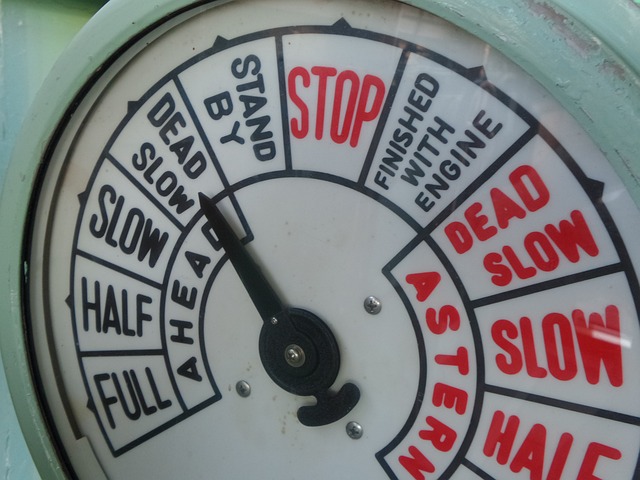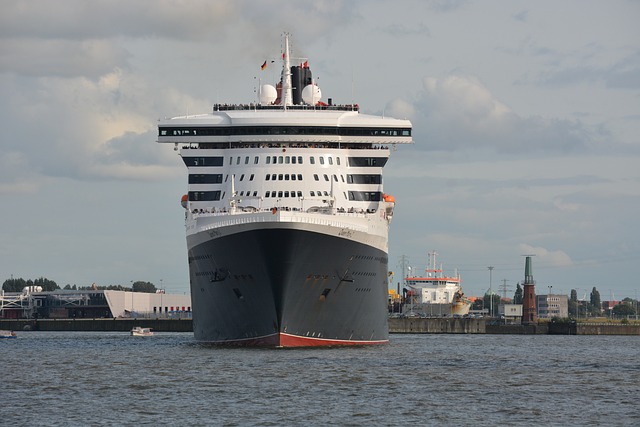If you’ve ever sipped a beverage on a sun-kissed deck, you’ve probably wondered, “How fast does a cruise ship go?” It can’t be denied that a lot of concepts surrounding cruise ships can both excite and intrigue many of us. But let’s get real, the romance of the high seas and the unlimited buffet isn’t our only curiosity.
The purpose of this fun-filled piece? Well, we’re sailing full speed ahead into the captivating world of top-speed cruise ships and ship velocity. Yes, you heard it right! We’re set to answer that million-dollar question – just how swiftly do cruise ships carve their way through the waters? Strap on your lifejackets, folks. It’s time to dive deep into the world of nautical numbers and seafaring speed!
Understanding Ship Speed
Before we start, it’s essential to understand that the speed of ships is measured differently than we’re used to on land. Instead of miles per hour, sailors use nautical miles and knots.
A knot is just another way to measure speed. One knot equals one nautical mile per hour. To put that into perspective, one knot is about 1.15 regular miles per hour (the speed measurement we use on land). So, when you’re comparing speed in different contexts—on land, air, or sea—remember that the units of measurement aren’t the same. Learning about this is your first-class ticket to the nautical lingo club.
How Fast Does a Cruise Ship Go?
Now that you know the concept of ship speed, let’s dive into the meaty bit — how fast do cruise ships go? Most modern cruise ships — from the dazzling Royal Caribbean vessels to your everyday ocean liners — glide through the seas at an average speed of about 20-30 knots. That’s roughly 23-34 mph on land. Yep, that’s slower than your average bicycle race, but hey, we’re on holiday, right?
Now, the speed of most cruise ships isn’t just a “one knot fits all” deal. Several factors affect the average cruise ship speed. Everything from the ship’s design, the weather (rough seas require slower speeds), and even fuel efficiency come into play. It’s a delicate dance, or should we say, a well-coordinated sea shanty of factors that keeps these vessels smoothly sailing to your next port of call.
Comparison of Speeds of Different Cruise Ships
Let’s look at our cruise ship heavyweights: Royal Caribbean, Carnival Cruise Line, Norwegian Cruise Line, and the rest of the maritime band.
Royal Caribbean’s grand fleet, despite its majestic size, generally maintains a comfortable, fuel-efficient cruising speed of about 18-20 knots. Not bad for a floating city, eh? Carnival Cruise Line’s fun ships aren’t far behind, averaging around 21 knots. A snail’s race, but a race nonetheless!
As for our friends at Norwegian Cruise Line, they are typically cruising at a maximum speed of around 24 knots. It’s not really about going fast, but more about a relaxing journey on the ocean.
How Cruise Ship Speed Affects Itinerary
So, here’s the scoop on how speed affects your itinerary on the high seas.
You see, the speed of a cruise- ship’s speed top isn’t just about how fast it can zip from Miami to the Bahamas. It’s a delicate balancing act between ensuring you reach your next exciting port on time and providing a smooth and enjoyable journey. If your cruise ship decided to mimic a speedboat, well, let’s just say that poolside margarita might end up in your lap instead of your mouth. Not quite the vacation memory you were hoping for, right?
Cruise lines are expert jugglers, managing this balance with the finesse of a seasoned trapeze artist. They map out itineraries that mix scenic slow cruising (perfect for soaking up sunsets) with necessary bursts of speed to keep up with the schedule. In essence, they’re trying to maximize your time exploring fantastic ports and minimize the time you’re asking, “Are we there yet?”
The moral of the story? No need for ludicrous speed on the love boat. Your cruise is about the journey, not just the destination. After all, the only race on a cruise should be the one for the last deck chair!
Speed Constraints: Why Do Cruise Ships Travel at a Slower Speed?
Now, you might be asking, “Why don’t cruise ships just crank up the speed and zip us straight to paradise?” Well, I hate to break it to you, but it’s not all about you! There’s a method to the maritime madness.
Our nautical buddies, the cruise ships, have to play nice with Mother Nature and Uncle Sam. You see, environmental factors such as wind, waves, and weather that affect cruise ship speed can mean it’s safer and more comfortable (nobody wants seasickness!) to slow things down a notch. Imagine trying to navigate through rough seas at top speed – even the sturdiest of cruise ships could start feeling like a cork bobbing in a bathtub!
Plus, there are all sorts of fun legal and safety constraints. Speed limits in certain areas protect marine life (you wouldn’t want to upset the dolphins, would you?) and help prevent accidents. And let’s not forget fuel efficiency. High speeds guzzle more fuel, which is bad for both the environment and the cruise line’s pocket.
So, while cruise ships may not always be setting speed records, remember they’re prioritizing smooth sailing and keeping Flipper and his friends happy. And really, who can argue with that?
What Are the Fastest Cruise Ships?
First up, let’s pay our respects to the fastest cruise ship of the Queen – Queen Mary 2, that is. This ocean liner (technically not a cruise ship, but who’s counting?) holds the title for the fastest passenger ship, capable of speeds up to a staggering 30 knots. If you’re late for high tea in England, she’s your best bet.
Now, among the bona fide cruise ships, the ‘Need for Speed’ award goes to Cunard. These ships, while known for their entertainment offerings and sheer size.
They aren’t just about speed though. They are loaded with features to enhance passenger comfort, from stabilizers to reduce roll in rough seas, to high-tech navigation systems, and let’s not forget the zip lines and surf simulators for when you tire of the shuffleboard.
Innovations and Future of Cruise Ship Speed
Now, let’s take a futuristic glimpse at the world of cruise ship speeds. With new technological advancements popping up faster than the bubbles in your average cruise ship with champagne, the horizon of cruising speed is set for a shakeup.
For starters, we are seeing the dawn of a new era with the introduction of LNG-powered engines. These bad boys not only have the potential to rev up the ship’s speed, but they also come with added environmental brownie points for reduced emissions.
Speaking of innovative design enhancements, have you heard about the hull design tweaks? Scientists, engineers, and what I can only assume are maritime magicians working on optimizing hull shapes to reduce water resistance and hence increase ship speed. Yes, folks, we’re talking about cruise ships potentially sporting the marine version of aerodynamic curves. Picture the fastest cruise ship with a sleek figure like a runway model, if you will.
But while we’re pushing boundaries in speed, we’re also eyeing efficiency and sustainability. Future cruise ships are likely to feature cutting-edge environmental protection and fuel-saving systems. So, we’re striving for a future where your modern cruise ship doesn’t just take you places fast but also does it while giving Earth a friendly nod.
To sum it up, the future of cruise ship speed is looking just as bright and promising as the neon dancefloor on the disco night of your cruise.
Conclusion
Alright, my fellow cruise ship enthusiasts, let’s wrap this up. So, the need for speed on the high seas isn’t just about getting you to the buffet faster. Rather, it’s a delicate ballet of factors, from hull design to ocean currents, and even those legal regulations.
Our beloved floating resorts aim to strike a perfect balance between getting you to your next margarita and ensuring you don’t spill it in the process. It’s about harnessing the power of modern vessels and also ensuring smooth sailing with an emphasis on comfort and efficiency.
The moral of the story? Fast or slow, just remember, the true joy of cruising isn’t just about how quickly you get there, but rather the journey itself – preferably with a tropical drink in hand!
FAQs
How fast do Royal Caribbean ships go?
Ah, the Royal Caribbean, they’re not just royal by name, but also by speed. On average, the Royal Caribbean cruise ships go a comfortable pace of about 18-21 knots. But remember, this can fluctuate based on factors like weather, ocean conditions, or if the captain’s late for his tea time.
How far can a cruise ship travel in 24 hours?
Well, if we stick to the average cruising speed of about 20 knots, which is roughly equivalent to 23 miles per hour, cruise ships go about 550 nautical miles in 24 hours. However, don’t start packing your bags just yet, as actual distances can vary depending on multiple factors.
Who has the fastest cruise ship?
The cheetah of the cruise ship Savannah is none other than the SS United States. She roars across the waves at a speed of nearly 38 knots. But remember, she’s more of an ocean liner than a traditional cruise ship.
What is faster a cruise ship or a car?
While your car could easily leave a cruise ship in its wake on land, in the open ocean, it’s a whole different ball game. On average, cars can go about 60-70 miles per hour, while cruise ships go around 20-30 miles per hour. But, remember, while your car may win the speed race, it definitely can’t match the luxury of a cruise ship. After all, does your car have 24/7 room service and nightly shows? I didn’t think so.







